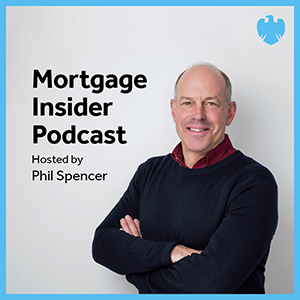A 1% interest rate rise would add £10bn to the UK’s mortgage bill, ultimately adding £930 a year to the cost of servicing the average mortgage, according to new analysis from international property adviser, Savills.
Four in 10 borrowers on variable rate mortgages would be first to feel the pain. Their annual mortgage bill would rise overnight by £4.3bn, while the 59% on fixed rate deals would be impacted later as fixed terms expire.
Buy to let landlords would pay an additional £2.4bn, with other home owners paying £7.8bn, or 76.5% of the total increase.
“This would bring an end to the historically low mortgage costs that have boosted housing affordability and limit the buying power of those needing a mortgage, and underscores our forecasts for more subdued house price growth over the next five years,” Savills head of residential research Lucian Cook said..
“We’d expect first time buyers in London, whose mortgage costs relative to earnings are already more stretched than for any other group, to be most affected.”
Outstanding mortgage debt currently stands at around £1,367bn and the annual mortgage bill at around £84.7bn. Over eight in 10 mortgages (83%) are now repayment mortgages. This, combined with low mortgage interest rates (averaging 2.58%), means that regular capital repayments account for 58% of total mortgage costs at around £50bn, with interest payments around £35bn.
Back in 2007, total borrowing was 15% lower than current levels, at £1,156bn, but the annual mortgage bill was 18 per cent higher, at £100bn.
However, with a prevailing mortgage rate of 6.1%, and much lower levels of repayment mortgages (54%), interest payments were double current levels, at almost £72 bn. Capital repayments were 43% lower.
Over the past 10 years the total number of outstanding mortgages fell by over half a million (551,000), primarily because mortgaged owner occupation has fallen as younger households struggle to access the market. Mortgaged buy to let landlord numbers have risen by 867,000, while other mortgaged ownership – primarily owner occupiers – numbers are down by around 1.42 million.
Indeed, Savills said, mortgaged buy to let landlords holding interest only mortgages have been the main beneficiaries of post credit crunch mortgage trends. The average buy to let mortgage interest payment has fallen by over £4,000 a year, down
NEW BUILD IN FOCUS - NEW EPISODE OF THE MORTGAGE INSIDER PODCAST, OUT NOW

Figures from the National House-Building Council saw Q1 2025 register a 36% increase in new homes built across the UK compared with the same period last year, representing a striking development for the first-time buyer market. But with the higher cost of building, ongoing planning challenges and new and changing regulations, how sustainable is this growth? And what does it mean for brokers?
The role of the bridging market and technology usage in the industry
Content editor, Dan McGrath, sat down with chief operating officer at Black & White Bridging, Damien Druce, and head of development finance at Empire Global Finance, Pete Williams, to explore the role of the bridging sector, the role of AI across the industry and how the property market has fared in the Labour Government’s first year in office.
Does the North-South divide still exist in the UK housing market?

What do the most expensive parts of the country reveal about shifting demand? And why is the Manchester housing market now outperforming many southern counterparts?
In this episode of the Barclays Mortgage Insider Podcast, host Phil Spencer is joined by Lucian Cook, Head of Research at Savills, and Ross Jones, founder of Home Financial and Evolve Commercial Finance, to explore how regional trends are redefining the UK housing, mortgage and buy-to-let markets.
In this episode of the Barclays Mortgage Insider Podcast, host Phil Spencer is joined by Lucian Cook, Head of Research at Savills, and Ross Jones, founder of Home Financial and Evolve Commercial Finance, to explore how regional trends are redefining the UK housing, mortgage and buy-to-let markets.
The new episode of The Mortgage Insider podcast, out now

Regional housing markets now matter more than ever. While London and the Southeast still tend to dominate the headlines from a house price and affordability perspective, much of the growth in rental yields and buyer demand is coming from other parts of the UK.
In this episode of the Barclays Mortgage Insider Podcast, host Phil Spencer is joined by Lucian Cook, Head of Research at Savills, and Ross Jones, founder of Home Financial and Evolve Commercial Finance.
In this episode of the Barclays Mortgage Insider Podcast, host Phil Spencer is joined by Lucian Cook, Head of Research at Savills, and Ross Jones, founder of Home Financial and Evolve Commercial Finance.
© 2019 Perspective Publishing Privacy & Cookies












Recent Stories